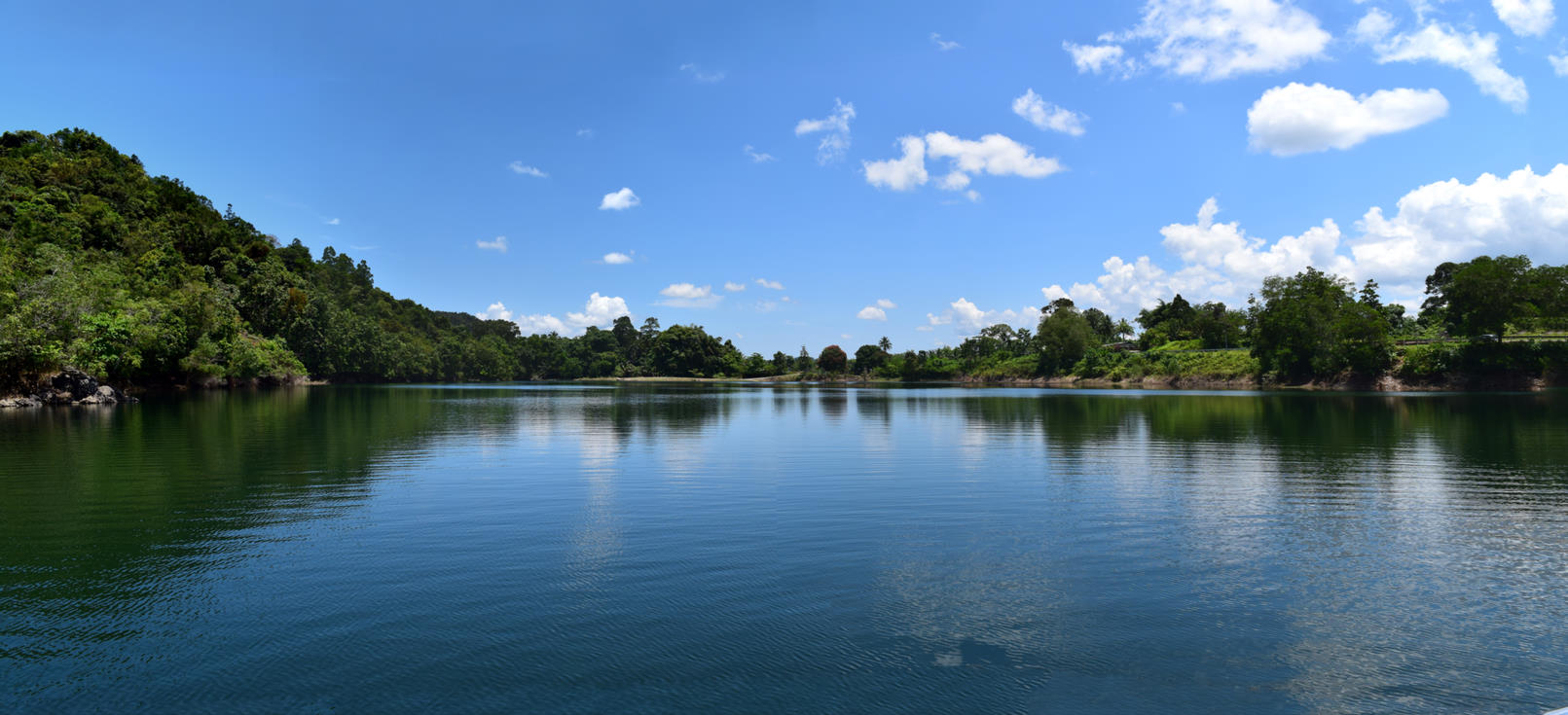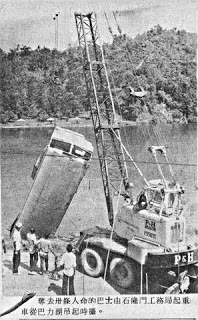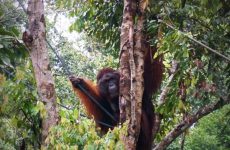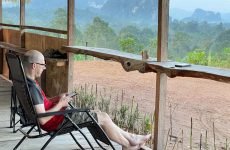If you have ever travel or planning to travel to Kuching, Sarawak in Borneo, you may have come upon a gold town called Bau town. Bau is an interior district of Kuching. It is located about 35 km from Kuching Waterfront. Being a small town full of history, Bau town is worth a day visit. You can visit a number of tourist attractions here such as Blue Lake, Fairy Cave, Wind Cave, Siniawan Night Market, Farmers Market, Serikin Border Market and even hiking to Catholic Memorial
In this article, we are going to discover the history of this precious gold town.
The old names of Bau Town
Bau district used to be called “Upper Sarawak” whereas the old name for Bau Town was “Mau San” or “Bukit Mau”. European authors during the Brooke regime pronounced “Bau” as “Bow”.

Year 1820-1830
Year 1820-1830
Establishment of Chinese settlement at Mau San (Old Bau Town) under the leadership of Liu Shan Bang
Few hundred Chinese miners along with their families discovered that Mau San has gold and antimony so they came over through Pangkalan Tebang from Sambas, Indonesia.
During this early settlement, Liu Shan Bang organised the ‘Twelve Kongsi’ company which operated the Mau San gold mine in and around Mau San area. They have also started exploiting antimony at Paku and Jambusan areas. Other than mining, some of them planted paddy, corn and potatoes around the mining areas. Rows of shop houses made of Atap, Kajang and timber were constructed on both sides of Jalan Bau Lama and residential houses were also put up by the miners in and around the vicinity of Mau San.
Year 1841
24 Sept 1841
Raja Muda Hashim proclaimed James Brooke as Rajah
Although at this time, the gold town was yet to be disturbed, a change in authority has happened over Kuching on 24th September 1841. Sultanate of Brunei has awarded Kuching area to Brooke as an exchange for Brooke’s continuous support towards the Sultanate.
Hashim tried to constantly delay the recognition of concession. His action, however, angered Brooke. James Brooke went ashore with Royalist fully armed to Hashim’s audience chamber and called on him to negotiate. Having little choice, Hashim proclaimed Brooke as the Rajah. Brooke then issued new laws for the territory banning slavery, headhunting and piracy. By July 1842, his appointment was confirmed by Sultan Omar Ali Saifuddin II.
Year 1850
Year 1850
Period of prosperity for the Bau Kongsi
The Bau kongsi has made the mining town of Mau San effectively self-governing. There were at least 4,000 Chinese, mostly Hakkas, in Mau San at the time.
By then, gold and antimony mining was also extended to Paku, Bidi, Takon and Jambusan areas. Besides, sundry shops, traditional teashops and lodging houses were also opened at Mau San for the convenience of travellers from Kuching and Sambas.
As for James Brooke, he had established agreement with the Twelve Kongsi of non intervention on respective areas, partly of his busy involvement with the local civil war between Brunei & local Dayaks, and earlier political circumstances.
Year 1857
18 Feb 1857
Liu Shan Bang led an attack towards James Brooke government in Kuching
Brooke Administration began to impose taxes, prohibited opium & wine trading, and restricted trading & export of gold & antimony, particularly to the self governing Mau San and the Twelve Kongsi. This has angered the miners and the Twelve Kongsi so Liu Shan Bang led 600 Chinese down the Sarawak River to attack the government on 18th Feb.
Five Europeans were killed, properties burnt, and the town in disarray. Most Europeans took shelter in the grounds of the Anglican Church. They besieged the town for three days. However, the insurgents did not want to assume the government; they offered it to Helms the manager of the Borneo Company and another trader called Ruppell, with the Datu Bandar administering the Malays, and withdrew upriver.
Year 1857
24 Feb 1857
Mau San mining settlement wiped out
On 23rd Feb 1857, Charles Brooke led a force of Ibans along with the local Bidayuh tribes in retaliation. Liu was killed at Jugan, on the way to Bau, on 24th. More than a hundred were also killed leaving dead bodies everywhere. The smell was said to be so bad that the nearby place is now called ‘Buso’ (in Malay, it means rotten or stink).
The remaining miners retreated further to Mau San, some escaped to Sambas, most perished on the way. Many miners & families, about 2,000 of them, hid in nearby cave (the Ghost Cave named after the tragedy) and subsequently been burnt or died of suffocation inside the cavern, including many women & children. The term ‘Bau‘, meaning smelly may comes after this incidence because the decomposed smell of dead bodies in Ghost Cave & surrounding areas in Mau San had lasted for several weeks.
Year 1857
25 Feb 1857
The Rajah’s troop continued by burning down the shophouses in Bau town on 25 Feb, marking the first fire of Bau baazar.
The gold town was basically dead for about a decade with the shophouses going down, together with the lives of the mining settlement.
Year 1867
Between 1867 & 1972
Shophouses was rebuilt at the present Kampung Masjid site between Year 1867 and 1972.
Year 1884
Year 1884
Mining operations were gradually taken over by The Borneo Company with the last Chinese syndicate being bought out in 1884.
Year 1898
Year 1898
The Borneo Company introduced the cyanide process for extracting the gold, which led to increased environmental pollution. Bau Lake was formed from an open cast gold mining pit known as Tai Parit mine.
Year 1909
3 Dec 1909
Second fire occured in Bau town
After 42 years of prosperity from 1867, another merciless fire occurred during the night of 3rd Dec 1909.
The Rajah’s government promptly resettled the fire victims. The shophouses were rebuilt for the third time within a year at the present site of the main street.
Year 1921
Year 1921
Tai Parit mine was closed because most of the easily reachable minerals had been removed. Once it was flooded, it was known as Tai Parit Lake and subsequently became a popular picnic spot.
Year 1941
24 Dec 1941
Japanese occupation
The Rajah’s government collapsed right after the Japanese troops landed in Kuching on 24th December 1941. The town was destroyed again by fire for the third time. However, this time it was the job of the gold miners and rubber tappers from Dahan Estate who set fire to the shophouses.
They took advantage of the fragile situation so that they can easily get supply of money and provision. They simply set fire and loot the shophouses if anyone refused them. After the occupation, Bau town was re-established from ashes. Wooden double-storey shophouses were built along the main streets.
Year 1975
Year 1975
Tasik Biru emerged as a popular picnic place
Some basic facilities were built around the lake way back in 1975, including a bridge across a narrow part of the lake for to get to the other side of the lake, several shades for visitors to rest and enjoy the beautiful scenery.
Two or three diving springboards were also provided. After the upgrading, the Lake was renamed Tasik Biru as the water appears greenish blue – due the reflection of the surrounding green plants and the blue sky.
Year 1978
24 Sept 1978
Fourth big fire of Bau Bazaar
In spite of the steady development and improvement made by the Government in and around Bau Town, the town again faced another fire tragedy. During the incident, most of the 69 wooden shops at Jalan Datuk Salau were destroyed. There were no casualties but about 900 people were made homeless.
Year 1979
7 June 1979
Bus Tragedy at Tasik Biru
About 12.50 pm, a bus belonging to the Bau Transport Company with 67 passengers plunged into the scenic Tasik Biru. 29 pupils and 1 trainee teacher were drowned. .Only 37 pupils, the driver and the conductor were rescued.

Year 1990
June 1990
Tasik Biru was closed for dewatering works, carried out by a mining company extracting gold ore from the side and bottom of the lake. Following the closure, Bau seemed to have lost its glory and reputation as a top tourist destination for locals as well as foreign visitors.
Year 2009
Year 2009
Tasik Biru stays open to the public till now
Tasik Biru was reopened to the public in 2009 with better facilities. There are a few stalls selling food and drinks, toilets, pontoon gangway, viewing platform, footpaths, railings by lakeside, a car park and landscaping.
Today, if you visit the place, you will see a signboard warning the public against swimming, fishing and bathing in or drinking from Tasik Biru because of the high arsenic content. According to NREB’s Annual Environmental Quality Report (2011), the level of arsenic in the Lake is 0.68mg/l – 13.6 times higher than the limit of Class IIB for arsenic in safe drinking water.
All these history makes the gold town as it is today. High arsenic content in the water of Tasik Biru does not stop people to appreciate its beauty until today. So make sure you stop by for a visit to this town the next time you visit Kuching, Sarawak.



